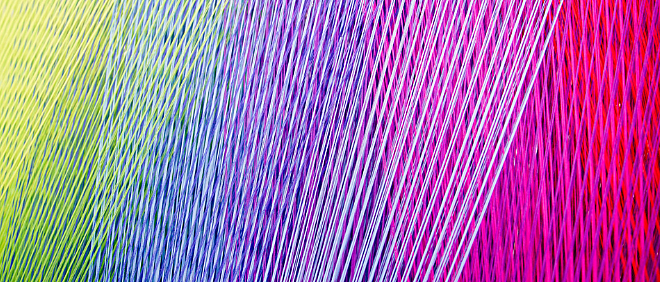Sapphire Finishing Mills
Lahore, Pakistan
Treated wastewater: 9600 m³/day
Organic load: 42.000 kg COD/d
Biogas:4.2 MWth biogas (75% CH4)

Fostering clean production in a polluting industry
Sapphire Finishing Mills Limited (SFML) is one of Pakistan's largest producers of woven processed fabric, casual wear apparel and work wear apparel. To reach its sustainable development goals, SFML wanted to comply with the industry’s Zero Discharge of Hazardous Chemicals charter (ZDHC). The charter wants to foster clean production in one of the most polluting industries.

Wastewater sample analysis
The complexity of textile manufacturing requires many production processes using a variety of toxic constituents. Wastewater from the different production units contains chemical compounds requiring expertise to design the appropriate treatment process.
For the majority of the wastewater treatment facilities, process design is based on wastewater sample analysis and lab-scale simulations at the state-of-the-art Waterleau R&D center. In the Sapphire Finishing Millls process design phase, wastewater samples were shipped from Lahore to Waterleau to determine the most efficient process.

Aerobic treatment and dissolved air flotation
From lab-analysis, it seemed that most of the Nitrogen and COD could be removed by the Waterleau LUCAS® Aerobic treatment with Nitrification/Denitrification. The remaining excess color and solids were removed with a physico-chemical treatment step using KROFTA® DAF technology and FENTON™-based coagulation-flocculation.

Upgrading the existing wastewater treatment facility
Each day, SFML treats 9.600m³ of wastewater or the equivalent of 15 tons of COD load. The new infrastructure has been integrated in the existing wastewater treatment facility. To reduce civil costs, a large glass coated steel tank divided into 4 partitions, serves as the aerobic reactor.
An integrated Fenton-coagulation/flocculation process is applied just before the physico-chemical treatment using KROFTA® Dissolved Air Flotation technology. After a final disinfection step, the treated waste is reused as surface cleaning water.
Conclusion
Wastewater sample analysis has been key in designing the treatment process and reaching the ZDHC-Foundational levels shortly after commissioning. The same equipment can be used to reach ZDHC-Progressive Levels in the future without additional capex.
Other cases

Wastewater treatment plant at a greenfield brewery
Helping Grupo Modelo achieve its sustainable development goals, reducing the environmental footprint.

Wastewater treatment in the vegetable processing industry
Food processors joined forces and created a special purpose vehicle for the collection and the treatment of the joint wastewater.
Find your local contact
Our expertise is always within reach. Digital communication has cut long distances short, but we advocate the traditional way of sharing insights.
Contact us today. We are looking forward to help you reach your sustainable development goals.




